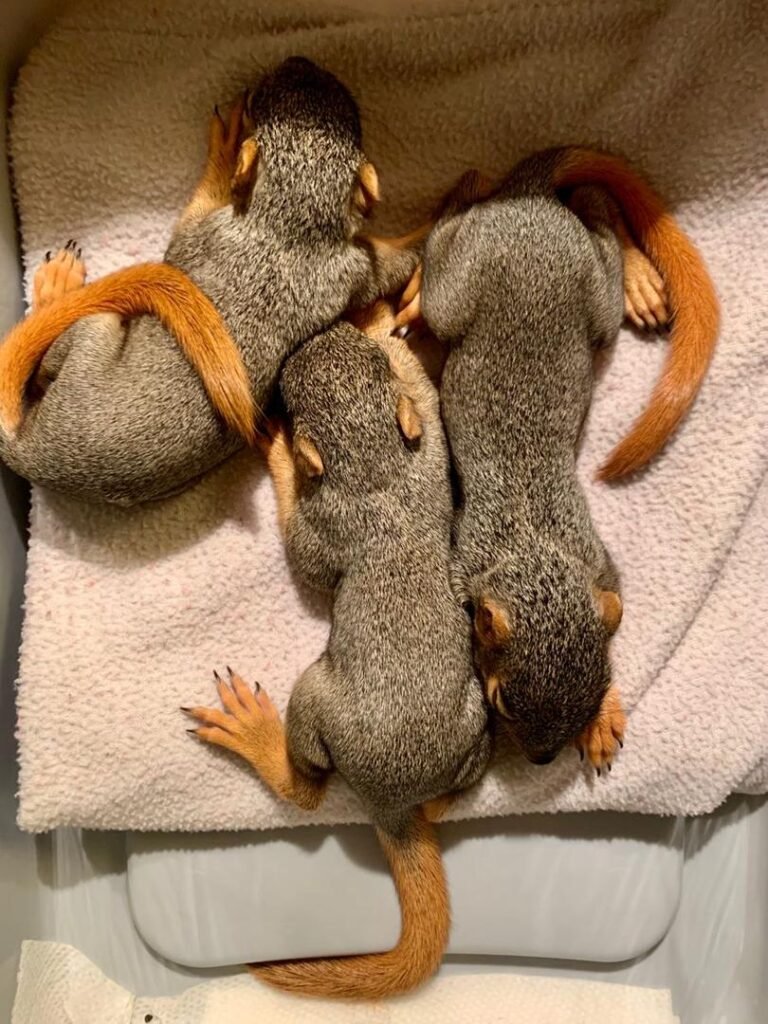How to Help a Baby Squirrel Go Potty – Tame Squirrel Care Tips

When caring for a hand-raised baby squirrel, one of the most essential tasks is helping it go potty. In their earliest weeks, baby squirrels are unable to urinate or defecate on their own. They rely entirely on stimulation, just as they would receive from their mother in the wild. This stage usually lasts until they are about five to six weeks old.
A mother squirrel naturally takes care of this by gently licking her baby’s genital and anal area after every feeding. For orphaned or tame squirrels being hand-raised for adoption, we replicate this natural behavior using a clean, safe method. After each feeding, take a soft cloth, tissue, or unscented baby wipe and gently rub the baby’s lower belly and genital area in small, circular motions. Be patient and gentle the process may take a few moments. Continue until the squirrel urinates and, if needed, passes stool.
Consistency is key. Stimulating after every feeding helps prevent painful constipation or dangerous urine retention. It also keeps the baby’s digestive system moving in a healthy rhythm and helps you monitor whether the squirrel is well-hydrated and digesting properly. Always clean the area afterward and make sure the baby is kept warm and dry to avoid irritation or infection.
Learning to help a squirrel eliminate is one of the most bonding and important responsibilities you’ll take on as a squirrel caretaker. It may feel awkward at first, but with a calm hand and a little practice, it becomes a simple, nurturing routine that ensures the squirrel stays healthy and comfortable.
Why Is Potty Help Important for Baby Squirrels?
A young squirrel’s body isn’t fully developed to urinate or poop independently. Without your help, they can retain waste, leading to discomfort or health issues. That’s why it’s essential to stimulate elimination at every feeding.
Even if you notice wet bedding, it doesn’t always mean your baby squirrel is going potty on its own. Consistent, gentle stimulation ensures proper digestion and bladder health.
How to Stimulate a Baby Squirrel to Pee and Poop
Follow these easy steps every time you feed your tame baby squirrel:
- Use a soft tissue or warm cotton pad (slightly dampened with water).
- Hold the squirrel in a natural, tummy-down position, like it’s resting in your hand.
- Gently rub or tap the genital and anal area, using a light circular or downward motion.
- Wait for the baby to urinate and/or defecate. This may take 30 seconds to 2 minutes.
- Clean the area gently afterward, and make sure the baby is dry and comfortable.
⚠️ Signs Your Squirrel Needs Help Going Potty
- A bloated belly or fussiness
- No urination after feedings
- Yellowish or dark urine
- Stool buildup or crusting around the bottom
If your squirrel shows any of these signs, continue gentle stimulation or consult your adoption care guide for further help.
🧡 Consistent Potty Care = A Healthy Baby Squirrel
Helping your baby squirrel pee and poop is an essential part of daily care. It keeps them comfortable, supports healthy growth, and sets the foundation for full independence as they mature. With your love and attention, they’ll thrive and grow into a happy, tame squirrel ready for their forever home.
